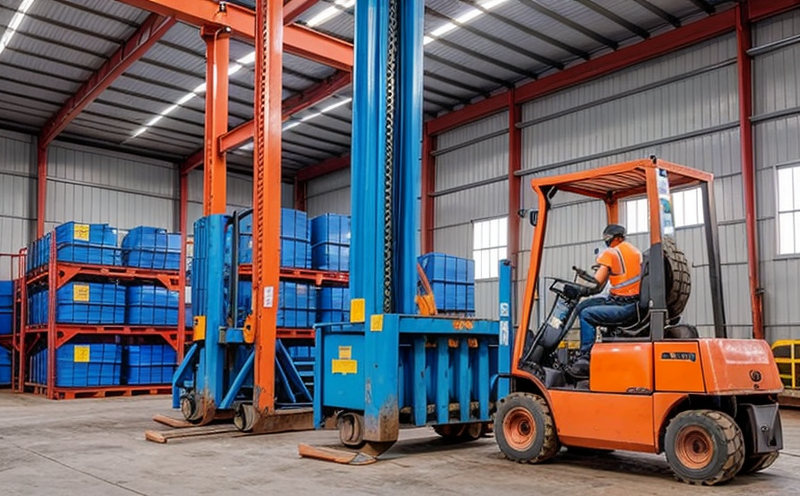Material handling equipment inspection
The inspection of material handling equipment is a critical task in ensuring safety, compliance with industry standards, and optimal performance. Material handling systems are designed to move goods efficiently within warehouses, factories, and distribution centers. These systems include conveyors, cranes, forklifts, and automated guided vehicles (AGVs). Regular inspections ensure these machines operate safely and effectively, reducing the risk of accidents and equipment failures.
Accredited laboratories play a pivotal role in this process by providing rigorous testing that adheres to international standards such as ISO 15378 for forklift trucks or ASME B30.21 for mobile cranes. These inspections involve visual assessments, functional tests, and detailed reports outlining any deficiencies found during the inspection.
The first step in inspecting material handling equipment is a thorough visual examination of all components. This includes checking for signs of wear and tear, corrosion, or damage that could indicate potential issues. Following this initial assessment, specific performance tests are conducted to evaluate the equipment's capabilities. For example, load testing verifies how much weight the equipment can safely handle without failure.
Another crucial aspect is the examination of control systems. Ensuring that these systems function correctly is essential for preventing accidents caused by malfunctions or improper operation. Electrical inspections focus on wiring integrity and ensure that all controls respond accurately to operator inputs. In addition, hydraulic systems in lift trucks must be checked regularly to maintain proper fluid levels and pressure.
Inspections also encompass safety features such as emergency stop buttons, overload protection devices, and backup power sources for cranes. These elements are vital in safeguarding against emergencies and ensuring quick responses if something goes wrong during operation. Compliance with relevant regulations like OSHA (Occupational Safety and Health Administration) is paramount to guarantee that all necessary safeguards are implemented correctly.
Once inspections have been completed, detailed reports are generated summarizing findings along with recommendations for corrective actions where needed. These documents serve as valuable resources for management teams when making decisions about maintenance schedules or potential upgrades for aging equipment. By adhering strictly to established protocols and utilizing advanced diagnostic tools, accredited labs can provide comprehensive assessments that contribute significantly towards maintaining high standards of safety and efficiency across various sectors.
Benefits
- Reduces the risk of accidents by identifying potential hazards early on
- Ensures compliance with relevant regulations and industry best practices
- Prolongs equipment lifespan through timely maintenance recommendations
- Improves overall operational efficiency by optimizing performance parameters
- Safeguards worker safety while reducing insurance costs associated with workplace injuries
Industry Applications
| Industry | Specific Equipment Inspected |
|---|---|
| Manufacturing | Forklift trucks, conveyors, automated guided vehicles (AGVs) |
| Distribution and Logistics | Cranes, stacker cranes, material handling robots |
| Construction | Mobile cranes, excavators with lifting capabilities |
| Retail | Automated storage and retrieval systems (AS/RS), lift trucks in warehouses |
Customer Impact and Satisfaction
The importance of material handling equipment inspection cannot be overstated. For organizations operating large-scale distribution centers or manufacturing plants, downtime due to equipment failure can lead to significant financial losses. By investing in regular inspections performed by accredited laboratories, companies demonstrate their commitment to maintaining high standards of safety and quality.
Regular inspections contribute positively towards enhancing customer satisfaction levels by ensuring reliable performance and meeting delivery deadlines consistently. This not only fosters trust between business partners but also improves brand reputation among end consumers who value reliability above all else.





